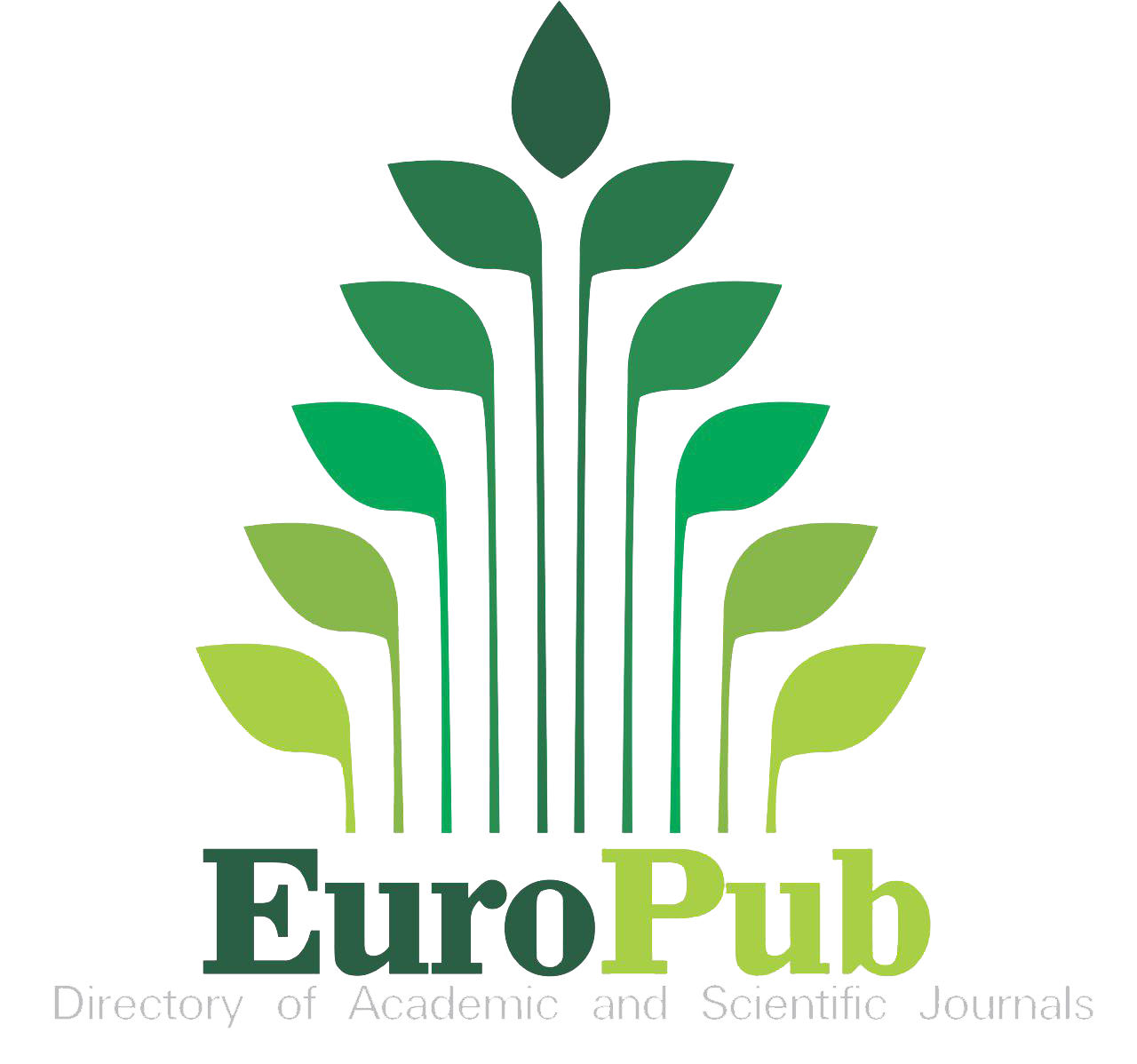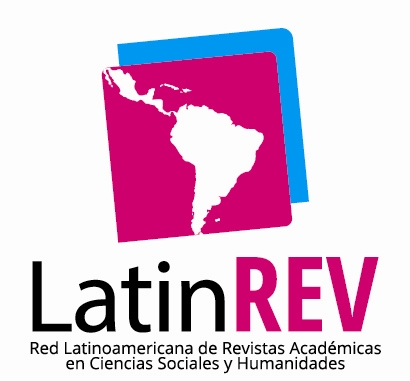Inovação Exploitation e Exploration
uma análise bibliométrica da produção científica da base de dados da Scopus (1995-2022)
DOI:
https://doi.org/10.16930/2237-766220233373Palavras-chave:
Bibliometria, Inovação Exploitation, Inovação ExplorationResumo
A inovação habilita as organizações a investirem em processos ou produtos que possibilitem o aumento da vantagem competitiva perante o mercado. Desta forma, a presente pesquisa objetiva realizar um mapeamento bibliométrico da produção científica sobre o tema Innovation Exploitation (inovação incremental) e Innovation Exploration (inovação radical) com foco nos artigos científicos publicados em periódicos das áreas de negócios, administração, contabilidade e economia. Contudo, foi realizada uma análise bibliométrica das publicações indexadas na base de dados Scopus referente ao período que abrange 1995 a 2022, operacionalizada com o auxílio do software Biblioshiny do RStudio. A busca foi efetuada pelas palavras-chave "Innovation Exploitation", "Innovation Exploration" e "Innovation Ambidexterity", nos campos título, resumo e palavra-chave. Após os processos de filtragem, a amostra final compreendeu 746 artigos científicos. Os resultados desta pesquisa apresentam uma evolução do tema com o passar dos anos. Em 1995 a inovação era considerada a criação ou remodelação de produtos, enquanto em 2020 a inovação foi definida como radical ou incremental, na qual o gestor utiliza a inovação como estratégia para aumento das vendas, e com auxílio da tecnologia diminui os custos de produção. A maioria das publicações (42,35%) ocorre após 2017, deixando clara a importância do tema nos últimos anos, sendo que, entre os anos 1995 e 2000 foram publicados apenas 22 artigos e entre 2017 e 2022 foram 408 pesquisas. Foi constatado que o autor com o maior número de citações é norte-americano, assim como, o país com o maior número de publicações são os Estados Unidos. Entretanto, a autora que possui maior número de publicações é italiana, assim como a maior rede de colaboração, sendo que a Itália é o terceiro país com maior número de publicações. Portanto, este estudo pode servir como um ponto de partida para pesquisas futuras, ou interessados pelo tema.
Referências
Andriopoulos, C., & Lewis, M. W. (2009). Exploitation-Exploitation Tensions and Organizational Ambidexterity: Managing Innovation Paradoxes. Organization Science, 20(4), 696-717. https://doi.org/10.1287/orsc.1080.0406 DOI: https://doi.org/10.1287/orsc.1080.0406
Arekrans, J., Ritzén, S., & Laurenti, R. (2022). The role of radical innovation in circular strategy deployment. Business Strategy and the Environment. https://doi.org/10.1002/bse.3108 DOI: https://doi.org/10.1002/bse.3108
Aria, M., & Cuccurullo, C. (2017). Bibliometrix: An R-tool for comprehensive science mapping analysis. Journal of Informetrics, 11(4), 959-975 https://doi.org/10.1016/j.joi.2017.08.007 DOI: https://doi.org/10.1016/j.joi.2017.08.007
Atuahene-Gima, K. (2005). Resolving the Capability Paradox Rigidity in New Product Innovation. Journal of Marketing, 69(4), 61-83. https://doi.org 10.1509/jmkg.2005.69.4.61 DOI: https://doi.org/10.1509/jmkg.2005.69.4.61
Bedford, D. S., Bisbe, J., & Sweeney, B. (2018). Performance measurement systems as generators of cognitive conflict in ambidextrous companies. Accounting, Organizations and Society, 72, 21-37. https://doi.org/10.1016/j.aos.2018.05.010 DOI: https://doi.org/10.1016/j.aos.2018.05.010
Benner, M. J., & Tushman, M. L. (2003). Exploitation, Exploration, and Process Management: The Productivity Dilemma Revisited. The Academy of Management Review, 28(2), 238-256. https://doi.org/10.2307/30040711 DOI: https://doi.org/10.5465/amr.2003.9416096
Benner, M. J., & Tushman, M. (2002). Process Management and Technological Innovation: A Longitudinal Study of the Photography and Paint Industries. Administrative Science Quarterly, 47(4), 676–707. https://doi.org/10.2307/3094913 DOI: https://doi.org/10.2307/3094913
Bresciani, S., Ferraris, A., & Del Giudice, M. (2018). The management of organizational ambidexterity through alliances in a new context of analysis: Internet of Things (IoT) smart city projects. Technological Forecasting and Social Change, 136, 331-338. https://doi.org/10.1016/j.techfore.2017.03.002 DOI: https://doi.org/10.1016/j.techfore.2017.03.002
Brown, J. S., & Duguid, P. (2001). Knowledge and Organization: A Social Practice Perspective. Organization Science, 12(2), 198-213. https://doi.org/10.1287/orsc.12.2.198.10116 DOI: https://doi.org/10.1287/orsc.12.2.198.10116
Cao, Q., Gedajlovic, E., & Zhang, H. (2009). Unpacking organizational ambidexterity: Dimensions, contingencies, and synergistic effects. Organization Science, 20, 781-796. https://doi.org/10.1287/orsc.1090.0426 DOI: https://doi.org/10.1287/orsc.1090.0426
Christensen, T. B., Wells, P., & Cipcigan, L. (2012). Can innovative business models overcome resistance to electric vehicles? Better Place and battery electric cars in Denmark. Energy policy, 48, 498-505, https://doi.org/10.1016/j.enpol.2012.05.054 DOI: https://doi.org/10.1016/j.enpol.2012.05.054
Danneels, E. (2002). The dynamics of product innovation and the competencies of companies. Strategic Management Journal, 23(12), 1095-1121. https://doi.org/10.1002/smj.275 DOI: https://doi.org/10.1002/smj.275
Davenport, S., & Bibby, D. (1999). Rethinking a national innovation system: The small country as' SME'. Technology Analysis & Strategic Management, 11(3), 431-462. https://doi.org/10.1080/095373299107447 DOI: https://doi.org/10.1080/095373299107447
Donthu, N., Kumar, S., Pattnaik, D., & Lim, W. M. (2021). A bibliometric retrospection of marketing from the lens of psychology: Insights from Psychology & Marketing. Psychology & Marketing, 38(5), 834-865. https://doi.org/10.1002/mar.21472 DOI: https://doi.org/10.1002/mar.21472
Duarte Ribeiro, W., Alves, C., & Vieira de Santana Júnior, O. (2023). Creativity and innovation: cralves framework application analysis to generate new business ideas in a publishing startup. Brazilian Journal of Management and Innovation (Revista Brasileira De Gestão E Inovação), 10(2), 40–55. https://doi.org/10.18226/23190639.v10n2.03 DOI: https://doi.org/10.18226/23190639.v10n2.03
Erzurumlu, S., & Smith, N. (2023). Managing Technological Innovation Capabilities to Align Exploration and Exploitation with Technological Changes. International Journal of Innovation and Technology Management. https://doi.org/10.1142/s0219877023500128 DOI: https://doi.org/10.1142/S0219877023500128
González-Ramos, M. I., Guadamillas, F., & Donate, M. J. (2023). The relationship between knowledge management strategies and corporate social responsibility: Effects on innovation capabilities. Technological Forecasting and Social Change, 188, 122287. https://doi.org/10.1016/j.techfore.2022.122287 DOI: https://doi.org/10.1016/j.techfore.2022.122287
Guan, J., & Liu, N. (2016). Exploitative and exploratory innovations in knowledge network and collaboration network: A patent analysis in the technological field of nano-energy. Research Policy, 45(1), 97–112. https://doi.org/10.1016/j.respol.2015.08.002 DOI: https://doi.org/10.1016/j.respol.2015.08.002
Hiebl, M. R. W., & Pielsticker, D. I. (2023). Automation, organizational ambidexterity and the stability of employee relations: new tensions arising between corporate entrepreneurship, innovation management and stakeholder management. The Journal of Technology Transfer. https://doi.org/10.1007/s10961-022-09987-1 DOI: https://doi.org/10.1007/s10961-022-09987-1
Instituto Brasileiro de Geografia e Estatística [IBGE] (2021). Indústria e Construção. https://www.ibge.gov.br/estatisticas/economicas/industria.html
Jayanthi, S., & Sinha, K. K. (1998). Innovation implementation in high technology manufacturing: A chaos-theoretic empirical analysis. Journal of Operations Management, 16(4), 471-494. https://doi.org/10.1016/S0272-6963(98)00025-4 DOI: https://doi.org/10.1016/S0272-6963(98)00025-4
Jansen, J. J. P., Van Den Bosch, F. A. J., & Volberda, H. W., (2006). Exploratory Innovation, Exploratory Innovation and Performance: Effects of Organizational Background and Environmental Moderators. Science of Administration, 52(11), 1661-1674. https://doi.org/10.1287/mnsc.1060.0576 DOI: https://doi.org/10.1287/mnsc.1060.0576
Jiménez-Jiménez, D., & Sanz-Valle, R. (2011). Innovation, organizational learning, and performance. Journal of Business Research, 64(4), 408-417. https://doi.org/10.1016/j.jbusres.2010.09.010 DOI: https://doi.org/10.1016/j.jbusres.2010.09.010
Keller, J., & Chen, E. W. (2017). A road map of the paradoxical mind. In Wendy K. Smith, Marianne W. Lewis, Paula Jarzabkowski, & Ann Langley (Eds.). The Oxford handbook of organizational paradox (pp. 66-86). Oxford University Press. DOI: https://doi.org/10.1093/oxfordhb/9780198754428.013.7
Kumar, S., Pandey, N., Lim, W. M., Chatterjee, A. N., & Pandey, N. (2021). What do we know about transfer pricing? Insights from bibliometric analysis. Journal of Business Research, 134, 275-287. https://doi.org/10.1016/j.jbusres.2021.05.041 DOI: https://doi.org/10.1016/j.jbusres.2021.05.041
Lee, Y., & Hemmert, M. (2023). Performance implications of combining innovation and internationalization for Korean small- and medium-sized manufacturing firms: an exploration–exploitation perspective. Asian Business & Management, 22, 1-25. https://doi.org/10.1057/s41291-020-00144-w DOI: https://doi.org/10.1057/s41291-020-00144-w
Lennon, N. J. (2022). Balancing incremental and radical innovation through performance measurement and incentivization. The Journal of High Technology Management Research, 33(2), 100439. https://doi.org/10.1016/j.hitech.2022.100439 DOI: https://doi.org/10.1016/j.hitech.2022.100439
Li, P., Liu, H., Li, Y., & Wang, H. (2023). Exploration–Exploitation Duality with Both Tradeoff and Synergy: The Curvilinear Interaction Effects of Learning Modes on Innovation Types. Management and Organization Review, 1-35. https://doi.org/10.1017/mor.2022.49 DOI: https://doi.org/10.1017/mor.2022.49
Lin, H., McDonough, E. F., Lin, S. J., & Lin, C. Y. (2013). Managing the exploitation/ exploration paradox: The role of a learning capability and innovation ambidexterity. Journal of Product Innovation Management, 30(2), 262-278. https://doi.org/10.1111/j.1540-5885.2012.00998.x DOI: https://doi.org/10.1111/j.1540-5885.2012.00998.x
Lissillour, R., & Rodriguez-Escobar, J.A. (2023). Organizational ambidexterity and the learning organization: the strategic role of a corporate university. The Learning Organization, 30 (1), 55-75. https://doi.org/10.1108/TLO-01-2021-0011 DOI: https://doi.org/10.1108/TLO-01-2021-0011
March, James G. (1991). Exploration and exploitation in organizational learning. Organization Science, 2, 71-87. https://doi.org/10.1287/orsc.2.1.71 DOI: https://doi.org/10.1287/orsc.2.1.71
Martini, A., Laugen, B. T., Gastaldi, L., & Corso, M. (2012). Continuous innovation: towards a paradoxical, ambidextrous combination of exploration and exploitation. International Journal of Technology Management, 61(1), 1. https://doi.org/10.1504/ijtm.2013.050246 DOI: https://doi.org/10.1504/IJTM.2013.050246
Michelino, F., Caputo, M., Cammarano, A., & Lamberti, E. (2014). Open Innovation Inbound and Outbound: Organization and Performances. Journal of Technology Management &Amp; Inovação, 9(3), 65-82. https://doi.org/10.4067/S0718-27242014000300005 DOI: https://doi.org/10.4067/S0718-27242014000300005
Negulescu, O. H. (2020). Innovation management: the source of continuous improvement of competitive advantage and organization’s performance. Review of General Management, 32(2)
Nie, X., Yu, M., Zhai, Y., & Lin, H. (2022). Explorative and exploitative innovation: A perspective on CEO humility, narcissism, and market dynamism. Journal of Business Research, 147, 71-81. https://doi.org/10.1016/j.jbusres.2022.03.061 DOI: https://doi.org/10.1016/j.jbusres.2022.03.061
Nooteboom, B., Van Haverbeke, W., Duysters, G., Gilsing, V., & Van Den Oord, A. (2007). Optimal cognitive distance and absorptive capacity. Research Policy, 36(7), 1016-1034. https://doi.org/10.1016/j.respol.2007.04.003 DOI: https://doi.org/10.1016/j.respol.2007.04.003
Paul, J., Lim, W. M., O’Cass, A., Hao, A. W., & Bresciani, S. (2021). Scientific Procedures and Rationales for Systematic Literature Reviews (SPAR-4-SLR). International Journal of Consumer Studies. https://doi.org/10.1111/ijcs.12695 DOI: https://doi.org/10.1111/ijcs.12695
Peris-Ortiz, M., García-Hurtado, D., & Román, A. P. (2023). Measuring knowledge exploration and exploitation in universities and the relationship with global ranking indicators. European Research on Management and Business Economics, 29(2), 100212. https://doi.org/10.1016/j.iedeen.2022.100212 DOI: https://doi.org/10.1016/j.iedeen.2022.100212
Raisch, S., Birkinshaw, J., Probst, G., & Tushman, ML (2009). Organizational Ambidexterity: Balancing Exploitation and Exploitation for Sustained Performance. Organization Science, 20(4), 685-695. doi:10.1287/orsc.1090.0428 DOI: https://doi.org/10.1287/orsc.1090.0428
Sabidussi, A., Lokshin, B., & Duysters, G. (2021). The innovator’s dilemma: the performance consequences of sequential or flexible exploration and exploitation patterns in turbulent environments. Technology Analysis & Strategic Management, 1-13. https://doi.org/10.1080/09537325.2021.1975033 DOI: https://doi.org/10.1080/09537325.2021.1975033
Shafique, I., Kalyar, M.N., Shafique, M., Kianto, A. & Beh, L.-S. (2022). Demystifying the link between knowledge management capability and innovation ambidexterity: organizational structure as a moderator. Business Process Management Journal, 28(5/6), 1343-1363. https://doi.org/10.1108/BPMJ-11-2021-0713 DOI: https://doi.org/10.1108/BPMJ-11-2021-0713
Shen, S., Venaik, S. & Zhu, Y. (2023). A Dynamic Model of Internationalization and Innovation in Emerging Market Enterprises: Knowledge Exploration, Transformation, and Exploitation. Manag Int Rev. https://doi-org.ez71.periodicos.capes.gov.br/10.1007/s11575-023-00509-1 DOI: https://doi.org/10.1007/s11575-023-00509-1
Smith, W. K., & Lewis, M. W. (2011). Toward a theory of paradox: A dynamic equilibrium model of organizing. Academy of Management Review, 36, 381-403. https://doi.org/10.5465/amr.2009.0223 DOI: https://doi.org/10.5465/amr.2009.0223
Solís-Molina, M., Hernández-Espallardo, M., & Rodríguez-Orejuela, A. (2018). Performance implications of organizational ambidexterity versus specialization in exploitation or exploration: The role of absorptive capacity. Journal of business research, 91, 181-194. https://doi.org/10.1016/j.jbusres.2018.06.001 DOI: https://doi.org/10.1016/j.jbusres.2018.06.001
Tidd, J., & Bessant, J. (2015). Gestão da inovação (5a ed.). Bookman.
Tushman, M. L., & O’Reilly, C. A. (1996). Ambidextrous Organizations: Managing Evolutionary and Revolutionary Change. California Management Review, 38(4), 8-29. https://doi.org/10.2307/41165852 DOI: https://doi.org/10.2307/41165852
Van Neerijnen, P., Tempelaar, M. P., & Van de Vrande, V. (2022). Embracing Paradox: TMT paradoxical processes as a steppingstone between TMT reflexivity and organizational ambidexterity. Organization Studies, 43(11), 1793-1814. https://doi.org/10.1177/01708406211058640 DOI: https://doi.org/10.1177/01708406211058640
Van de Vrande, V., Jong, J. P. J., Vanhaverbeke, W., & de Rochemont, M. (2009). Open innovation in SMEs: Trends, motives, and management challenges. Technovation, 29(6-7), 423-437. https://doi.org/10.1016/j.technovation.2008.1 DOI: https://doi.org/10.1016/j.technovation.2008.10.001
Warglien, M. (1995). Hierarchical Selection and Organizational Adaptation. Industrial and Corporate Change, 4(1), 161-186. https://doi.org/10.1093/icc/4.1.161 DOI: https://doi.org/10.1093/icc/4.1.161
Zheng, F., Li, Y., Jian, Z., & Lu, R. (2023). Industrial productivity dilemma in management and economics: Retrospect and prospect. International Journal of Management Reviews. https://doi.org/10.1111/ijmr.12327 DOI: https://doi.org/10.1111/ijmr.12327
Zhou, K. Z., & Wu, F. (2009). Technological capacity, strategic flexibility, and product innovation. Strategic Management Magazine. https://doi.org/10.1002/smj.830 DOI: https://doi.org/10.1002/smj.830
Downloads
Publicado
Como Citar
Edição
Seção
Licença
Copyright (c) 2023 Revista Catarinense da Ciência Contábil

Este trabalho está licenciado sob uma licença Creative Commons Attribution 4.0 International License.
Os direitos autorais para artigos publicados nesta revista pertencem ao(s) respectivo(s) autor(es), com direitos de primeira publicação cedidos para a Revista Catarinense da Ciência Contábil - RCCC. Em virtude de aparecerem nesta revista de acesso público, os artigos são de uso gratuito, com obrigatoriedade de reconhecimento da autoria original e da publicação inicial nesta revista. A revista permitirá o uso dos trabalhos publicados, incluindo direito de enviar o trabalho para bases de dados de acesso público. O conteúdo dos artigos publicados são de total e exclusiva responsabilidade dos autores.
- O(s) autor(es) autoriza(m) a publicação do artigo na revista;
- O(s) autor(es) garante(m) que a contribuição é original e inédita e que não está em processo de avaliação em outra(s) revista(s);
- A revista não se responsabiliza pelas opiniões, ideias e conceitos emitidos nos textos, por serem de inteira responsabilidade de seu(s) autor(es);
- É reservado aos editores o direito de proceder ajustes textuais e de adequação do artigo às normas da publicação.

Esta obra está licenciada com uma Licença Creative Commons Atribuição 4.0 Internacional.










